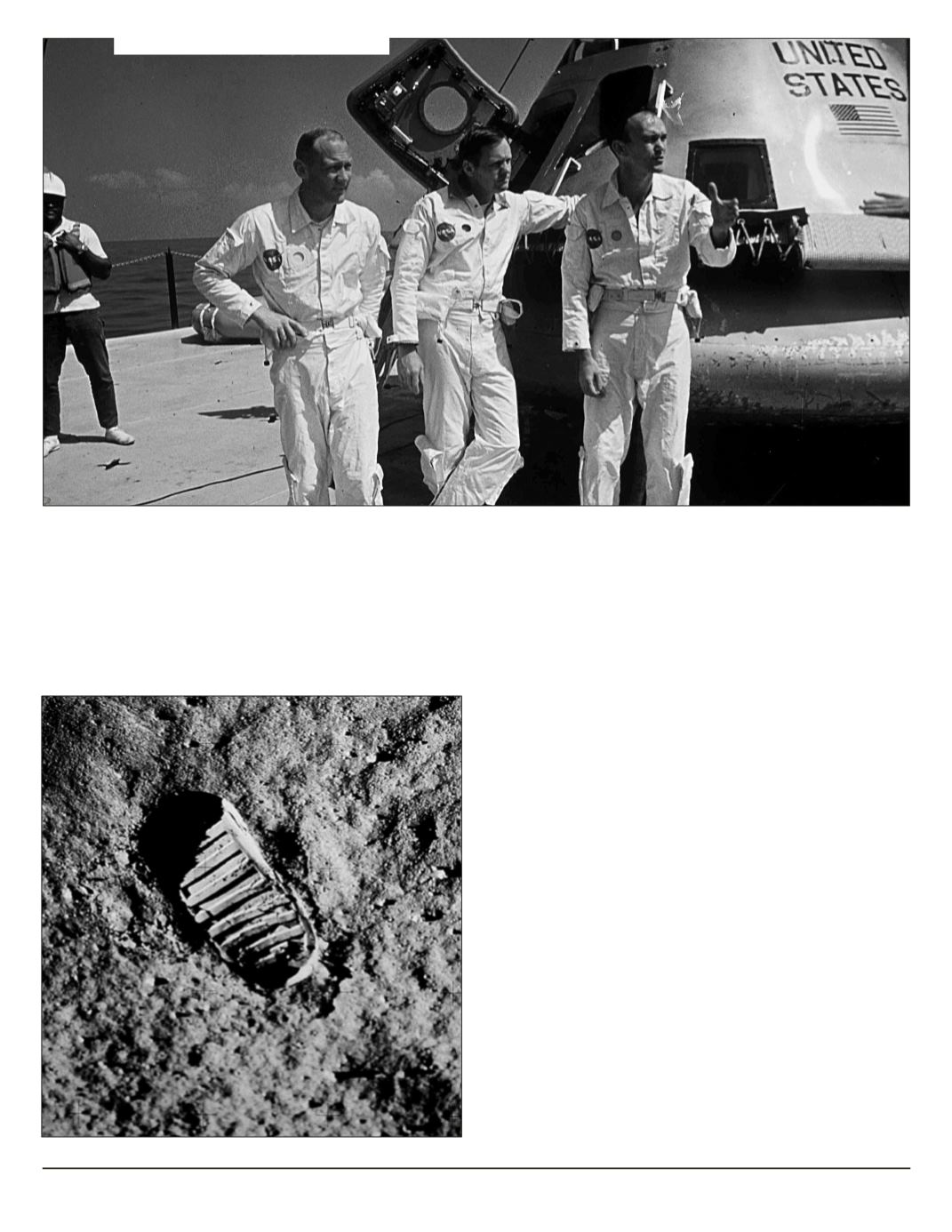

Time Lines 13
Above: In this 1969 file photo, Apollo 11 astronauts stand next to their spacecraft in 1969, from left to
right: Col. Edwin E. Aldrin, lunar module pilot; Neil Armstrong, flight commander; and Lt. Michael Collins,
command module pilot. (AP Photo, file)
Below: A footprint left by one of the astronauts of the Apollo 11 mission shows in the soft, powder surface
of the moon on July 20, 1969. Commander Neil A. Armstrong and Air Force Col. Edwin E. “Buzz” Aldrin Jr.
became the first men to walk on the moon after blastoff from Cape Kennedy, Fla., on July 16, 1969. They
headed back home from the lunar surface on July 21, 1969. The end of man’s first voyage to another planet
ended with a splashdown 950 miles southwest of Hawaii, thus achieving President John F. Kennedy’s chal-
lenge to land men on the moon before the end of the 1960s.
50 Years Ago - The Moon Landing
Kennedy’s challenge was more than the imagin-
ings of a starry-eyed dreamer. It was the cold, calcu-
lated maneuver of a president moving the goalposts.
America had been soundly defeated in the first leg
of the space race by its Cold War adversaries in the
Soviet Union.
By making a new goal, Kennedy reduced the rele-
vancy of the Russians wins and focused the country
away from America’s failure.
“We choose to go to the moon,” the president said.
“We choose to go to the moon in this decade and do
the other things, not because they are easy, but be-
cause they are hard, because that goal will serve
to organize and measure the best of our energies
and skills, because that challenge is one that we are
willing to accept, one we are unwilling to postpone,
and one which we intend to win, and the others, too.”
The advances in technology, in math, that took
place in the 8 years between Kennedy’s speech and
Apollo 11 are vast. It is almost beyond comprehen-
sion how far and how fast NASA flew.


















